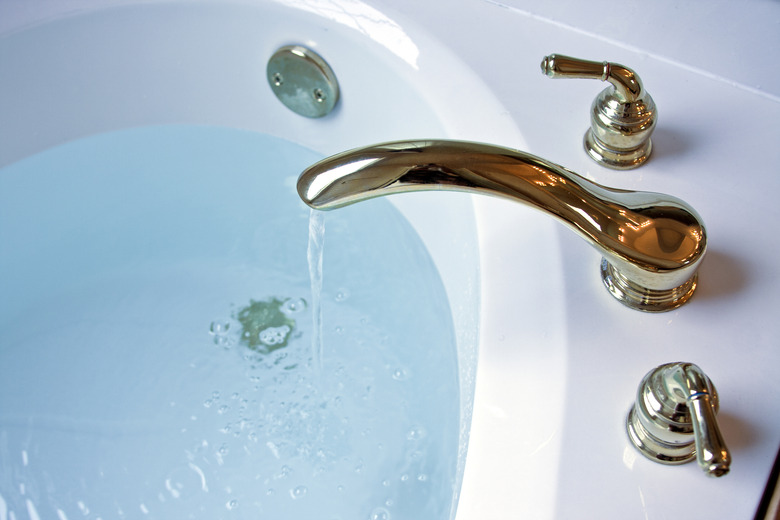How To Plug A Bathtub Drain When The Stopper Doesn't Work
We may receive a commission on purchases made from links.
When a bathtub drain stopper has given up the ghost, a temporary fix can work until you're able to repair or replace the old stopper. A simple inexpensive vinyl or plastic round stopper, available at grocery and home improvement stores, covers the bathtub drain to keep water in a bathtub when the stopper doesn't work. But if you can't get to the store right away, temporary fixes can also work when you need to know how to plug a bathtub drain. For an emergency temporary solution, create a DIY tub stopper from items you may already have on hand.
Plumber's Putty Fix
Plumber's Putty Fix
When the gasket has failed on your pop-up drain and no longer acts as a seal to keep water in the tub, plumber's putty offers a temporary fix until you can replace the gasket. Plumbers use this putty in drains and other fittings to prevent leaks.
Roll a bit of putty between your hands into a snakelike shape long enough to encircle the drain. Lift up the pop-up drain and cover the leaky gasket with the putty, closing the drain on the putty. This is a one-time fix, as you'll need to remove the putty when you drain the tub.
Washcloth in a Bag
Washcloth in a Bag
A washcloth is the perfect item for a DIY bath plug. Tuck a flat washcloth into a plastic bag. Squeeze or suck most of the air from the bag, sealing the ends if it's a sandwich or storage bag, tying the ends in a knot or using a cable tie to seal the washcloth in the bag. Roll or fold the washcloth-in-a-bag so it fits into the bathtub drain hole, insert it (much of the washcloth should be sticking out of the drain) and turn the water on. You may have to hold the bag and washcloth in the drain until enough water is in the tub to keep them in place.
Single-Serve Coffee Pods
Single-Serve Coffee Pods
Check the drain or flange size in your tub. A single-serve coffee pod might just fit inside the drain to keep water in a bathtub when the stopper doesn't work. Simply set the cup into the drain opening with the top facing down to plug the hole. It might leak a bit, but it should last long enough so that you can take a bath.
Everyday Toilet Plunger
Everyday Toilet Plunger
Clean the rubber end of a toilet plunger in the bathroom sink with soap and water. Set the plunger over the drain hole in the tub, pressing down on it to form a seal. Remove the wooden handle — unless you want to look at it while you bathe — and fill the tub with water. If the hole for the wooden handle goes all the way through, leave the handle in the plunger.
Marine Drain Twist Plug
Marine Drain Twist Plug
Fishermen often have spare marine drain twist plugs in their tool kits. Meant for live fish wells or ballast tanks to drain the water after a day on the water, a drain twist plug works just as well to prevent tub water from draining. Twist the marine stopper plug into the drain clockwise by its T-shaped brass handle. Lightly pull up and twist it counterclockwise to remove. These only work if the twist plug matches the drain hole size.
Jam Jar Lids
Jam Jar Lids
Hold a large enough jam or other jar lid over the drain upside down. Turn the water on to fill the tub. Once enough water fills the tub, the suction from beneath the drain and the weight of the water should keep the lid against the drain enough to keep water in the tub when the stopper doesn't work.
Plastic Bag Filled With Water
Plastic Bag Filled With Water
A plastic bag filled with water and sealed makes a quick drain plug. Use a storage or sandwich bag and fill it with water, closing the seal. You can also tie a plastic bag that doesn't seal by wrapping a rubber band around the ends to keep it closed. Set the water-filled bag directly over the drain and fill the tub.
Not Sure? Call a Plumber
Not Sure? Call a Plumber
If it seems like something more is going on than just a hinky tub stopper, don't hesitate to call a plumber. If it affects things like the overflow drain or there's some kind of leak going on, there could be a more serious underlying cause, and you don't want to gamble with potential flooding or moisture damage. Sometimes, it's worth the peace of mind to call in a pro.
